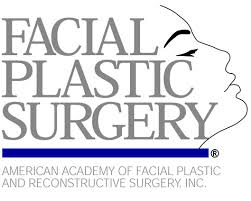Jun 16

Is It Safe to Get Botox, Filler, or Sculptra If You're Planning Surgery in the Future?
Is It Safe to Get Botox, Filler, or Sculptra If You’re Planning Surgery in the Future?
If you’ve ever wondered whether getting Botox, filler, or Sculptra is a smart idea before plastic surgery, you’re not alone. Many patients considering a future facelift, rhinoplasty, or other cosmetic procedure are also interested in minimally invasive treatments in the meantime. But how do these injectables affect your surgical timeline—or your surgical results?
Let’s break it down by treatment type and offer some guidance on what’s typically considered safe, smart, and worth discussing with your provider.
Botox: Generally Safe and Doesn’t Affect Surgery
Botox (and similar neurotoxins like Dysport or Xeomin) work by temporarily relaxing muscles. They typically do not change the structure of your tissue, and they wear off in 3–4 months.
Planning future surgery?
Botox is usually fine. In fact, many surgeons recommend continuing Botox pre-op to reduce muscle activity and prevent new lines from forming. It won’t interfere with your results, and it may actually help preserve them afterward.
Pro tip: Just avoid Botox a week before surgery to minimize any potential swelling or bruising at injection sites.
Filler: Be Cautious, Especially with Certain Procedures
Dermal fillers (like Juvederm, Restylane, and Radiesse) add volume to cheeks, under eyes, lips, jawlines, and more. The issue? Fillers can distort anatomy or create swelling in the tissues your surgeon will be working with.
If you're planning surgery soon:
It’s usually best to wait until after your procedure to resume filler. That way, your surgeon can work with your natural tissue without interference or surprises.
If you have filler in you and are planning surgery:
It’s usually best to dissolve the filler prior to surgery if your surgery involves fat grafting under eyes or a chin implant and you have filler in those areas.
Filler in the cheeks, lips, and nasolabial folds is typically not an issue with eyelid surgery, brow lifts, and even deep plane face and neck lifts, unless a very significant amount of filler is in those areas.
Sculptra: Typically OK but depends on the area
Sculptra is not a traditional filler—it stimulates collagen production over time, creating long-lasting volume. Sculptra is great for gradual facial rejuvenation, and as long as it is placed in the correct tissue planes, it rarely complicates surgery planning.
If you're considering surgery down the line: You’ll want to be strategic. Because Sculptra's effects are more difficult to reverse, and they can linger for over two years, it may be better to hold off until after surgery.
Exception: In some circumstances, patients with very thin faces are encouraged to have Sculptra treatment before surgery to improve their skin thickness and elasticity.
In short: Talk to your surgeon before getting Sculptra if you think you may want surgery in the next year or two.
The Bottom Line
Yes, it’s often okay to get Botox, filler, or Sculptra if you’re planning surgery—but timing, placement, and transparency matter.
- Always tell your surgeon what treatments you’ve had and when
- Don’t get Botox treatments right before surgery (allow 2+ weeks at minimum)
- If planning fat grafting under eyes or a chin implant, dissolve existing filler prior to before surgery
- If you’re within 6 months of a facelift or similar procedure, it’s always a good idea to pause fillers or Sculptra until after surgery unless cleared by your doctor
Cosmetic injectables and surgery don’t have to be either/or. In fact, when used thoughtfully, they can complement each other beautifully. The key is honest communication with your provider and a personalized plan that puts safety—and your final result—first.





